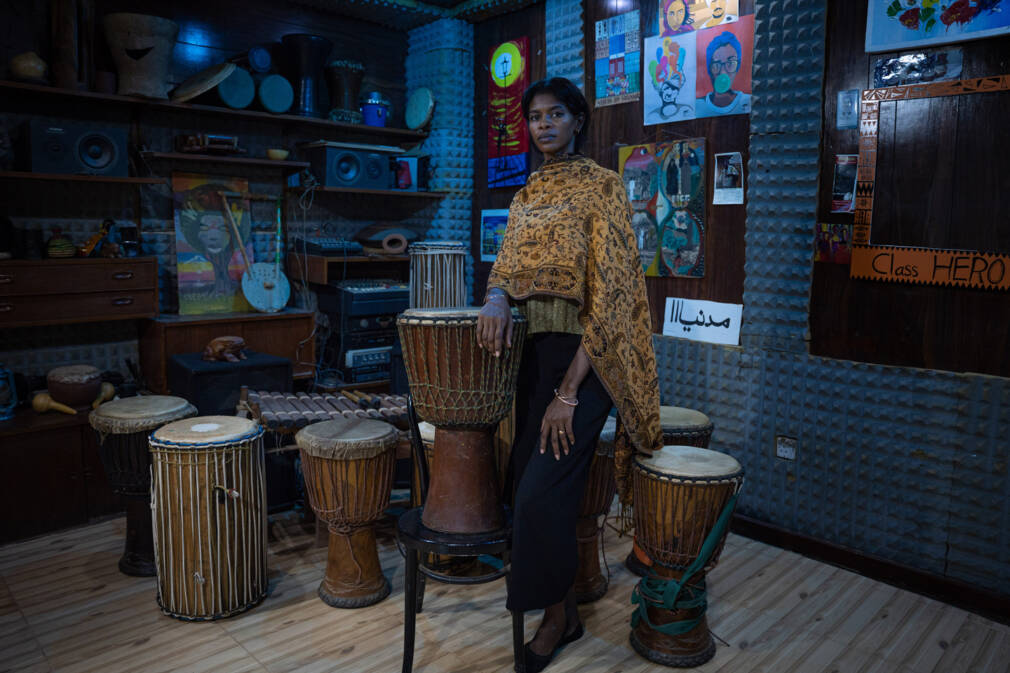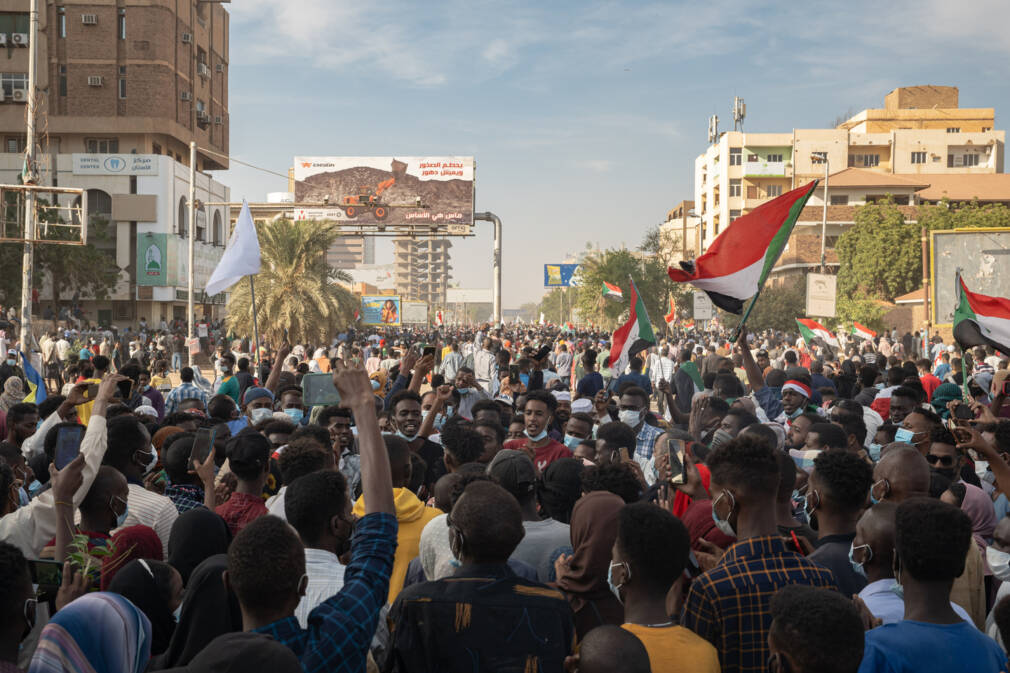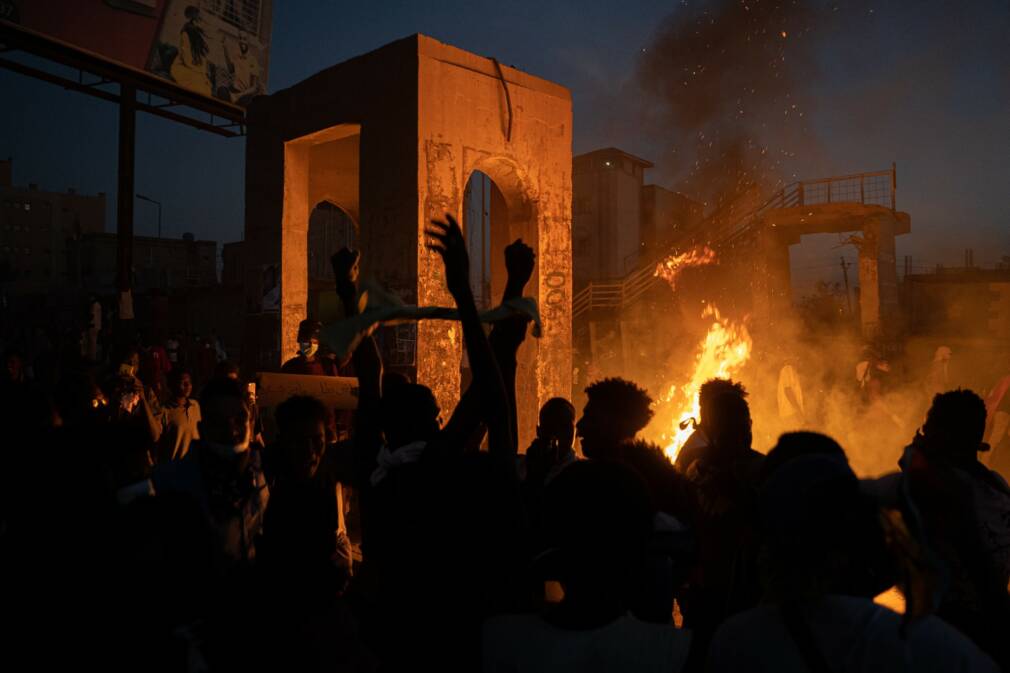Gidam. It means “all the way”. Throughout the film, the determination of the protesters in the streets of Khartoum is clear. Since the military seized power on October 25th after arresting the prime minister and taking control of the transitional government, people have poured onto the streets in protest. Everyone was shocked: how could the revolution that had brought down a thirty-year dictatorship be dismissed by these men in army uniforms, many of whom were part of the former regime? Something surprising one might notice while watching this 11 minute documentary by Arthur Larie and Bastien Massa, is that women – and in particular young women – are at the forefront of this grassroots effort.
“During the revolution” Arthur Larie explains, “there were already a lot of women in the protests, but now you can see that it’s ultra-mixed. I don’t quite know what conclusions to draw. It’s a change from many of the images we have of women in the Arab world. They say that in revolution they had much more to gain than to lose because the laws are so discriminatory. In any case, they have a strong presence here.”
The first sequence of the film is beautiful as well as illuminating, showing us two young women leading a chorus of anti-military chants and taking us directly into the heart of the protests. To accompany and support them is another young woman – striking for her tall and graceful stature – playing her djembe. Her name is Enas.

“The day we arrived”, says Arthur “there was a protest. That was the day we shot the first sequence of the film and we came across Enas. At the time we didn’t know that she would become the main character of our film.” The young woman, who is the same age as our filmmakers, opened the doors of her home to them. The film allows us, against this explosive socio-political background, to enter the intimacy of a family, and to understand how relations between generations, as well as between men and women, are being updated in the context that followed the revolution. “Having access to that kind of intimacy was not a foregone conclusion”, Bastien explains, “and we met other people too, like Mahmoud, who knew Enas and took us to her home…There were a lot of unforeseen events, a lot of coincidences that made it possible.” At Enas’ house the TV is often on, as she follows the latest news from the demonstrations before joining in. She puts on her saffron veil, grabs her drum, and jumps into a tuk-tuk to join the convoy. There she makes her djembe sing.
“Music is a very important part of the demonstrations and Enas playing the djembe provided us with such a strong image – she really embodied the central role of women in the revolution. She is emblematic of the Sudanese youth who aspire to change their country.” Enas explains the relationship between percussion – which traditionally called for war – and the revolution. Through her djembe she becomes a conduit between the protesters and their cause, between their dreams and their achievements. At the centre of this community we can see Enas blossom.
According to Bastien, music “used to be something you’d only do at home, or in some private space. What has changed since the revolution is that artists have been able to take their work out into the street: graffiti, music, art…it’s all moved from inside the home (where it was supposed to remain secret) to something that’s being done publicly.”

While the film immediately plunges us into the enthusiasm present in a movement that intends to protect the gains of the 2019 revolution, concerns do surface. Enas’ conversation with her friend Mahmoud is revealing. The two sit on a bench discussing the future of the movement and Mahmoud, whose head had been forcibly shaved by the military, seems less optimistic than his friend. He muses that the military seem to want to return to the previous order. We’ve learned that since this discussion Mahmoud has left the country and that in recent weeks repression has only increased (the death toll since the coup is close to 80). Many activists have been arrested.
“Enas is emblematic of her generation, and yet it’s not every day that we see images like these from Sudan. You realise that Enas is just like us, and just like other people her age. We didn’t go looking for a super militant but for the everyday youth who take to the streets and want to protect the rights gained from the revolution…”
The outcome of this tug-of-war between protesters and the military remains uncertain. Bastien insists “that what people want is for the military to stand down. The fact that there are international talks is seen by protestors as recognition that the military can be negotiated with, and that those who have taken power can move towards a transition. But for those out on the streets the feeling is: first the military leave, then we build a transition. In parallel with these negotiations, military repression has only increased…they are turning up the pressure.”
Therefore making this kind of film, in direct contact with the demonstrators, makes even more sense. This is why PAM wanted to share it with you. We invite you to watch it, and to share it as widely as possible.




